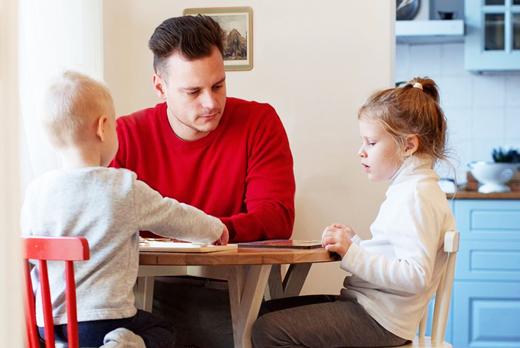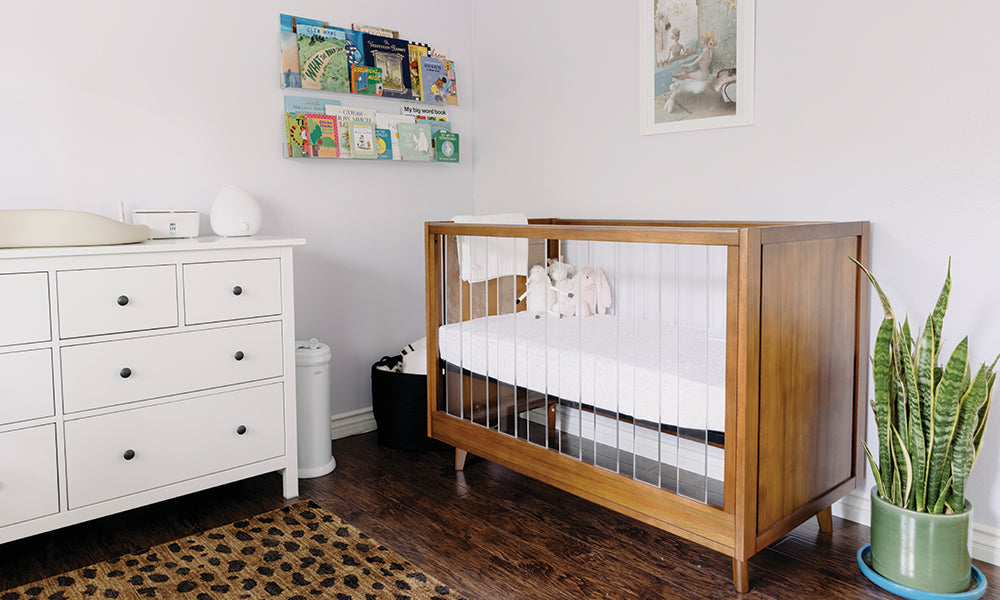How to Teach Effective Communication

How to Teach Effective Communication
Kids communicate in different ways. Some expressive little ones will convey their wants and needs with a simple facial expression. Others might rely on hand gestures to try and tell you something. While these are useful tools in a communication kit, helping your child develop language skills is essential to ensuring they feel understood and can express themselves in everyday interactions. Here are four excellent ways to encourage talkative kids from day one...


1. Respond to early vocalization
The first step to supporting language development in your child is ensuring babies feel proud of their attempts to communicate. How we respond to their early vocalizations (around 3 to 12 months of age) can either encourage or discourage little ones. Positive reinforcement is key. When babies cry because they’re hungry or uncomfortable we naturally respond, helping them recognize a reciprocal relationship between vocalizing and receiving what they need. Engaging with happy noises or other baby gurglings can also teach your child to use verbal sounds to communicate. Try acknowledging them with positive facial expressions and nodding. “This (responding to early vocalizations) encourages them to begin intentionally communicating their needs,” says speech-language pathologist Rachel Cortese in an article for Child Mind. This will progress to non-verbal communication first, such as pointing, then to language soon after.
2. Create opportunities to practice
At some point your child will begin learning to communicate with words. Single words first (12 to 18 months) and then short sentences (18 months to 2 years). Learning this new skill, however, won’t necessarily stop them falling back into the habit of using non-verbal communication to get what they want. A great way to avoid any regression in this area is to create opportunities for your child to constantly practice their newfound skills. This can include putting things just out of reach or leaving gaps in well-known songs you sing together for them to fill in. Speech and language resource author Allison Fors calls these opportunities ‘communication temptations.’ On her website, she says this strategy ‘encourages them to be the initiator of communication and creates opportunities to expand their language.’ However she also reminds parents that ‘communication temptations are not meant to be negative experiences or withholding.’ If your child becomes frustrated, feel free to help them with prompts or questions that encourage them to find the right words.
3. Set an example
Using language in front of your children as often as possible -- even if you can’t have a conversation with them yet -- is a great way to fast track their language development. Raising Children suggests narrating your day by talking about things that make sense to your child, such as what you’re seeing or doing together. This includes talking about things in the past or future, or explaining context. Try talking about what you will cook later while you’re at the supermarket buying the ingredients. Another suggestion is explaining how an orange is grown if you’re cutting one up for a snack. This sort of increasingly complex narration works well with kids aged two and up.
4. Use real words
In any context, ensuring your child knows and uses ‘real words’ will mean they can communicate clearly about often difficult subjects. This is particularly important when learning about the body, enabling them to, for example, explain the location of a pain or an itch to you or a doctor accurately and without embarrassment.
In an article for Huffington Post, sex educator Lydia M. Bowers suggests avoiding using ‘cutsey’ names for body parts instead of the real thing, such as penis and vagina. “If we’re using cutesy names because we’re embarrassed or ashamed to say the actual terms, we’re perpetuating the idea that some body parts are dirty, bad, or shameful,” she says.
Above all, helping your child learn and develop language skills should be focused on fun -- for both of you. Check out these great play ideas to encourage toddler talking, and remember children develop at different rates so don’t compare your little one to others. If you’re concerned, book an appointment with your doctor, pediatrician, or child and family health nurse.
Miranda Luby
Miranda Luby is a freelance lifestyle journalist and columnist with bylines for the BBC, Kidspot, Natural Health, and Nourish magazine. You can find her at mirandaluby.com.
You may also like to read
Why Positive Touch Between Parents and Children Is So Important
We explore the reasons why touch is so important between parents and children — from emotional connection to secure attachment.
When to Stop Swaddling Your Baby
Swaddling a baby comforts them and promotes good sleep... but it's important not to do it too long. We talk to baby sleep consultant Caroline Pavlick for a closer look at the when, why, and...
How to Transition from a Bassinet to a Crib
The first few month's of a baby's life are hectic and sleep hygiene is a learning curve. Here, we talk with certified baby and toddler sleep consultant, Jenni June, to...




